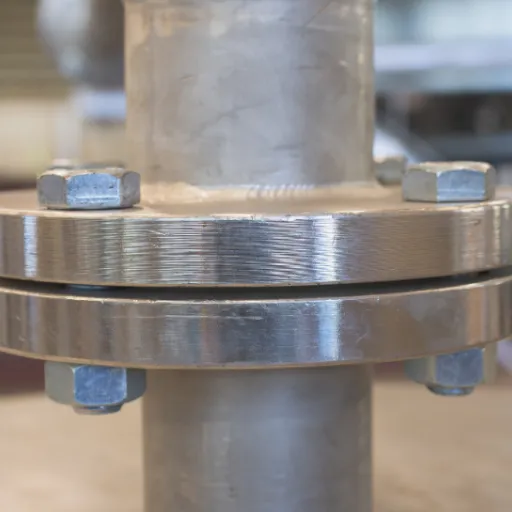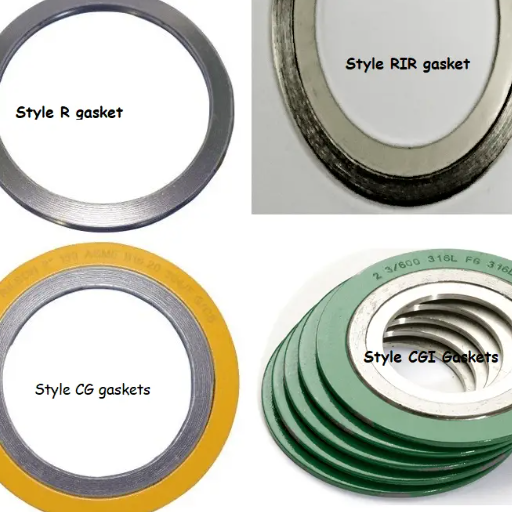Blind flanges are very important aspects for piping engineering yet seldom draw attention to themselves due to their utmost requirements. Blind flanges are mounted in various instances in oil and gas, manufacturing, and construction, and yet knowledge of blind flanges can elevate your ability to maintain safety, efficiency, and compliance in your projects. This article will go into the details of blind flange definition, design, and how do blind flanges work so that any reader is equipped with essential facts to make wise choices. Thus, able to block pipe ends and also provide methods for pressure test, blind flanges find strategic and functional applications. Continue reading to learn more about these seemingly simple but essential components and how they can influence your piping systems.
What is a Blind Flange?

A blind flange is a solid, circular plate used to close or seal off the end of a pipe. Unlike other flanges, it does not have a central opening, making it ideal for stopping the flow of fluids or gases in a piping system. Blind flanges are commonly utilized during maintenance, pressure testing, or when extending a system in the future. Their design ensures a secure, leak-proof seal, enhancing safety and efficiency in various industrial applications.
Definition and Purpose
A blind flange serves as a critical component in piping systems, designed to block off the ends of pipes securely. According to the latest data and resources, its use spans a wide range of industries, including oil and gas, water treatment, and chemical processing. Blind flanges not only provide a reliable means of halting the flow of liquids or gases but also play a pivotal role in enabling safe maintenance, system testing under pressure, and future system expansions or alterations. Recent industry trends highlight the growing demand for corrosion-resistant materials, such as stainless steel and alloys, in blind flange manufacturing, ensuring durability in high-pressure and high-temperature environments. Their robust construction and versatility make blind flanges an indispensable tool for enhancing the safety and efficiency of modern piping infrastructure.
Difference Between Blind and Other Flanges
Blind flanges are peculiar in design and function. Contrasting with slip-on, weld neck, or threaded flanges, blind flanges consist of solid disks that are used to seal the openings of piping systems or vessels entirely. This fundamental difference in construction gives blind flanges an important feature: they have no bore in the centre, making them perfectly suited to mark the termination of pipe runs, pressure testing, and isolate other sections of a system for maintenance.
One key benefit of the blind flange is that higher-pressure ratings can be attained than what most other flanges offer, as the solid obstruction completely precludes any leakage through the passageway. Additionally, blind flanges can be designed and constructed with tapping consideration for an extra connection or may even be drilled at a later stage to provide interims when some modifications are expected.
Whereas slip-on or lap joint-type flanges stress ease of installation, blind flanges prioritize reliability and safety within the system by providing a complete closure to the system. Hence, recent data and industry trends indicate a rise in the demand for high-strength blind flanges, especially for applications within the petrochemical, oil and gas, and power generation industries where endurance to extreme conditions is of the essence.
In this regard, while other types of flanges provide make-ups for the flow of fluid, blind flanges serve as secure closures to facilitate testing and enhance operational flexibility.
Common Applications of Blind Flanges
Blind flanges serve as crucial joinery across various engineering spheres for working solutions, offering reliable closure. A recent trends has shown that the demand for blind flanges is rising across the petrochemical, oil and gas, and power generation industries. Based on its application, the flange finds usage basically in installations where pipe systems have to be sealed either temporarily or permanently, such as during maintenance, pressure testing, or upgrading of systems. The oil and gas industry depends on blind flanges to isolate pipeline sections for safe high-pressure operations, while power plants utilize them for effective control of pressurized systems during testing and repairs. The ever-increasing demand further highlights their pivotal role in ensuring safety, system integrity, and operational flexibility in high-pressure environments.
Choosing the Right Blind Flange

Important Factors to Consider in Selecting a Blind Flange While Ensuring Proper Performance and Safety:
Material Compatibility: Materials should be selected that resist corrosion if necessary and conform to the specifications of the system to which it is linked. Options include carbon steel, stainless steel, or alloy steel, depending on environmental criteria and pressure ratings.
Pressure and Temperature Ratings: A flange must never fail by losing its integrity due to the system’s maximum allowable pressure and temperature.
Size and Standards: The dimensions of the flanges must correspond to those required by the system so that the flanges fit perfectly and safely. For all purposes, flanges should conform to recognized standard specifications, such as ASME or ANSI.
Application Requirements: Consider whether it is an isolation, high-pressure testing, or maintenance application to identify the correct type required.
Facilitating the discernment of a blind flange that will support the system in question while ensuring safety and efficiency involves these considerations.
Factors to Consider
When selecting a blind flange, the engine demands a greater emphasis on sustainability and innovative materials. Industries are favoring blind flanges made up of environmentally friendly and recyclable materials to support their environmental agendas. Furthermore, there is an increased search for corrosion-resistant materials such as stainless steel alloys to ensure longevity under tough working conditions.
Also trending is the agreeable rejection of standard flanges in favor of custom-made flanges, which are tailored to very particular specifications of the system at hand. Advancements in technology and machining now allow fabrication with manipulating precision towards the intricate needs of the applications. By bringing in these considerations along with the industry standards and cutting-edge knowledge, an organization can decide on the more suitable alternative, assuring smooth operation for a longer period.
Blind Flange Materials
Blind flanges are manufactured from various types of materials to suit various industrial requirements, with every type being chosen insofar as its mechanical, chemical, and thermal properties are concerned. Common materials include carbon steel, which offers maximum strength and durability suitable for high-pressure applications; stainless steel-for corrosive resistance in an atmosphere filled with moisture, acids, or extreme temperatures; alloy steel may be used with better mechanical properties of tenacity and wear resistance to absorb extra harsh impacts in heavy applications, while, on the other hand, high-performance-grade materials such as nickel alloys and duplex stainless steels are utilized for applications requiring top-level resistance to harsh chemicals or saline conditions such as chemical processing plants or marine environments. Insight from modern manufacturing and data trends attests to an increasing reliance on composite materials and special-purpose coatings to lengthen the lifetime and performance of blind flanges in governing challenges.
Flange Types and Their Uses
| Type | Key Use | Strength | Pressure | Welding | Cost |
|---|---|---|---|---|---|
| Weld Neck | High-pressure | High | High | Butt Weld | High |
| Slip-On | Low-pressure | Moderate | Low | Fillet Weld | Low |
| Socket Weld | Small pipes | Moderate | High | Fillet Weld | Moderate |
| Lap Joint | Maintenance | Low | Low | None | Low |
| Threaded | Non-welded | Low | Low | None | Low |
| Blind | Sealing ends | High | High | None | Moderate |
Types and Their Uses
Each kind of flange has distinct applications and needs to be chosen for that very purpose. Weld neck flanges find employment in high-pressure and temperature environments owing to their tapered hub that diminishes stress. Slip-on flanges are the cheapest, designed for low-pressure applications, and easiest to install. Blind flanges close the piping line while it is safe for maintenance or shutdown. Threaded flanges are best for those applications where welding is impossible, and these offer easy installation and removal. Lastly, the lap joint flange and stub end find application in systems requiring frequent dismantling or where alignment is very important. Each of these types is crucial in lending reliability and efficiency to the application in the industries.
Using a Blind Flange in Piping Systems

How do blind flanges work? Blind flanges are a must in the industry when sealing the end of piping systems for safety, while preventing leakage during maintenance or system shutdown. These flanges are employed when temporary or permanent stoppage of flow is required. A flat plate flange with its solid design gets a complete closure and can withstand very high-pressure and temperature conditions, serving ideally for almost all heavy industries. On occasion, blind flanges have tapped holes for pressure testing, which increases their use greatly in pressure monitoring and maintenance operations.
Installation Process
The installation of a blind flange begins with cleaning all surfaces, the faces of the flanges, and the pipe ends for dust or other particulates that might cause improper sealing. Afterward, you place the blind flange on the pipe flange or companion flange, ensuring correct bolt hole alignment. Bolts are then inserted evenly, scourged almost entirely by hand, and used to hold the flanges in place. Subsequently, using the torque wrench, the bolts are tightened according to the crisscross sequence to ensure even pressure distribution and avoid leakage. A pressure test is then conducted to verify that the seal is tight and secure in sealing the system.
Common Challenges and Solutions
I mostly experience issues ranging from misalignment of the blind flange with the pipe or companion flange to uneven pressure and to leakage, and to avoid this, I practice extra care during the positioning process to ensure the bolt holes are perfectly aligned before inserting the bolts. Others are applying torque inconsistently or to say not using a torque wrench following the cross tightening method; this is prevented by applying consistent use of a torque wrench in a crisscross manner. The third is perhaps the deterioration of gasket integrity from damage during installation; in this instance, I insist on inspecting the gasket before installation and handling it with care to maintain its integrity. Following the above processes, I am sure I am set for a secure and dependable install.
Leak Prevention with Blind Flanges
In my experience, if blind flanges are correctly sealed, the major causes of leaks are poor alignment and poor sealing procedures. The first step would be to make sure that the flange and pipe surfaces were clean and free of any dirt. Any contamination can impair the seal. Then I’d double-check the alignment of the blind flange and bolt holes so that stress is not put on the seal during assembly. I’d use a torque wrench, also, to systematically tighten the bolts in a crisscross pattern at the recommended torque values given by the manufacturer so that there is even pressure. I would select a perfect fit gasket that suits the operational conditions of pressure, temperature, and fluid type so as to minimize the risk of material failure. Taken care of with the utmost detail, these procedures help to keep a dependable, leak-proof joint.
Maintenance and Inspection of Blind Flanges

Inspection and maintenance of blind flanges are essential for the long-term performance and reliability of such flanges. Initially, always check for visible signs of wear such as corrosion, cracks, or deformation, which will hamper the integrity of the flange. Check for gasket seating surface damage; clean them to avoid any chance of debris during reassembly. Bolts should be adequately checked for corrosion and replaced if found to be so to hold the connections firmly. Bolts and torque should be checked again from time to time to determine if loosening has occurred during operation. Keep records of inspections, repairs, and replacements to keep track of the flange’s condition over time and the standards it complies with concerning safety.
Regular Maintenance Tips
Maintenance of a proper flange would include periodic inspections. I would always consider any visible signs of wear, corrosion, and damage on sealing surfaces, which otherwise could limit functionality. Thorough cleaning of the surface and debris removal help in providing an optimum seal during reassembly. In the case of bolts showing signs of corrosion or damage, they are replaced immediately to ensure secure connections between flanges. To avoid loosening during operation, torque values would be re-checked after assembly and periodically after that. I maintain records of all inspections, repairs, and replacements on these items, as it helps me to correlate the condition of the flange and, therefore, stay compliant with established safety and maintenance standards over time.
Signs of Wear and Failure
The inspection for signs of wear and failure reflects the following: Cracks, dents, or warping on the flange surface that suggests a structurally compromised situation, calls for immediate attention. Corrosion I check for as it may weaken the material with passing time, including any indication of leaks in the form of residue or moisture on the corners of the sealing areas. Uneven wear patterns on the gasket or the flange face may suggest improper alignment or excessive force. Similarly, bolts that are loose or have the wrong torque value may very well be problematic and so should be attended to without delay, lest they develop into operational failures.
When to Replace a Blind Flange
Basically, there are reasons to replace any blind flange that exhibits deterioration or failure. Significant corrosion compromising the integrity of the flange or structural deformations such as cracks and warping would call in for replacement for the sake of operational safety. Persistent leaks that occur even after regular maintenance or gasket replacement are indicative that the flange is no longer sealing properly. Additional conditions that raise red flags and call for replacement of the flange include excessive wear from long exposure to high pressure or being subjected to misalignment. Premature failure can be prevented by periodic inspections as well as the proper application of torque during installation, but once such are identified, it becomes paramount to replace the flange for the sake of system reliability as well as performance.
References
- Savree: Blind Flanges Explained – This source provides an in-depth explanation of blind flanges, their purpose, and how they function.
- API International: Common Uses and Features of Blind Pipe Flanges – This blog discusses the common applications and features of blind flanges, including their role in testing pipe pressure.
- Texas Flange: All You Need To Know About Blind Flanges – This article covers the objectives and uses of blind flanges in various engineering contexts.
- Top Blind Flanges Suppliers in China
Frequently Asked Questions (FAQ)
How Do Blind Flanges Work in Pipe Systems?
Blind flanges are used to seal the end of a piping system, providing a secure closure that prevents leaks and maintains pressure. They are typically installed at the end of the pipe, allowing for easy access to the interior of the line if needed. Blind flanges can be made from various materials, including steel, to withstand the pressure and stress caused by variable or cyclical forces. The design includes bolt holes around the perimeter, ensuring a reliable seal when bolted to a mating flange. In applications where a permanent closure is not required, blind flanges may be used to temporarily cover sections of the pipeline.
Choosing the Right Blind Flange Materials
When selecting materials for blind flanges, it’s important to consider the application and the environment in which they will be used. Steel blind flanges are commonly used for their strength and durability, especially in high-pressure applications. However, other materials like plastic or composite may be suitable for food and wastewater treatment systems where corrosion resistance is a priority. The diameter of the pipe and the flange features, such as raised or flat face configurations, also play a crucial role in choosing the right blind flange. Ensuring compatibility with existing flanges is essential for a reliable seal and effective pipeline operation.
How Are Blind Flanges Used to Seal Pipe Ends?
Blind flanges are specifically designed to seal the ends of pipes or pressure vessels, effectively preventing any fluid from escaping. This is achieved by bolting the blind flange onto the mating flange, creating a tight seal that withstands the pressure within the system. In many cases, these flanges are used in conjunction with other pipe flanges to create a complete piping solution. The installation of a blind flange can also be beneficial during maintenance, as it allows for sections of the pipeline to be closed off while work is being performed. Once the work is complete, the blind flange can be removed, providing access to the interior of the line.
What Are the Key Features of Blind Flanges?
Blind flanges are characterized by several key features that enhance their functionality in piping systems. They are typically flat or raised face to accommodate various sealing requirements. The bolt holes around the perimeter allow for secure attachment to the mating flange, ensuring a tight seal. Additionally, blind flanges are available in different sizes to match the diameter of the pipe, making them versatile for various applications. Their design allows them to withstand high-pressure conditions, making them suitable for use in demanding environments. Understanding these features can help when selecting the right blind flange for specific applications.
Can Blind Flanges Be Installed for Temporary Use?
Yes, blind flanges can be installed to temporarily cover sections of a piping system. This is particularly useful during maintenance or when a section needs to be isolated for inspection. By using a blind flange, operators can maintain pressure in other parts of the system while preventing leaks in the section being worked on. Once the maintenance is complete, the blind flange can be removed, restoring full access to the interior of the line. This flexibility makes blind flanges a valuable tool in industrial piping applications, allowing for efficient management of pipeline operations.






